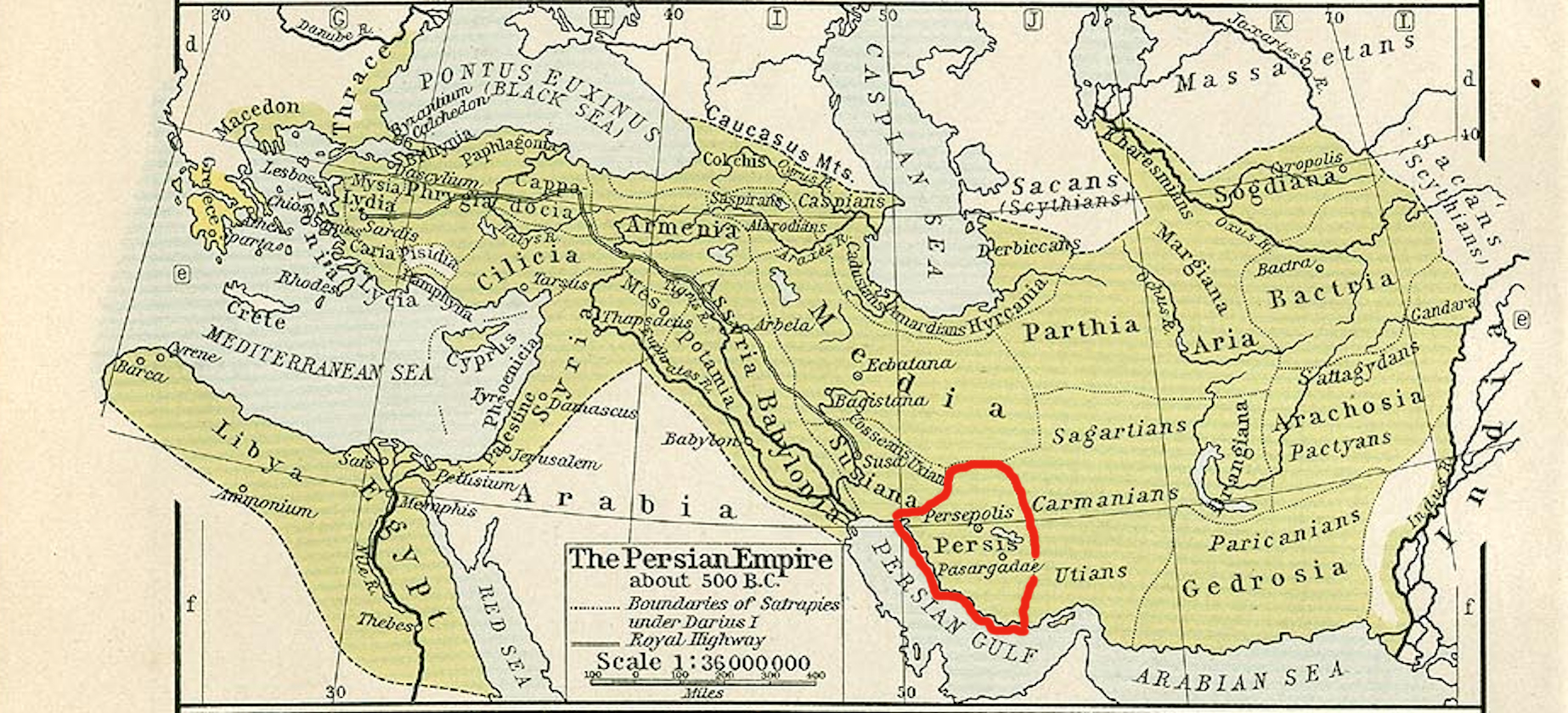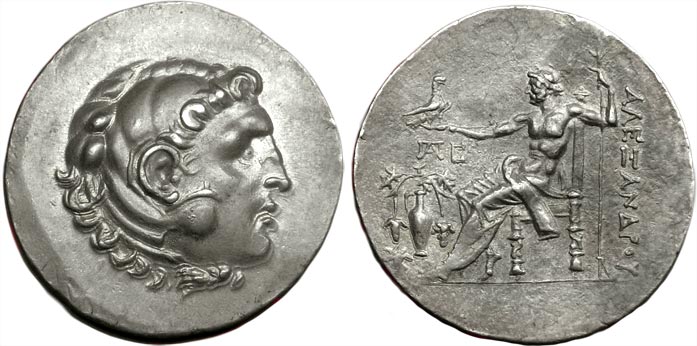|
Bagadates I
Baydad (also spelled Bagdates), was a dynast (''frataraka'') of Persis from 164 to 146 BC. Background Since the end of the 3rd or the beginning of the 2nd century BCE, Persis had been ruled by local dynasts subject to the Seleucid Empire. They held the ancient Persian title of ''frataraka'' ("leader, governor, forerunner"), which is also attested in the Achaemenid-era. The Achaemenid Empire, which had a century earlier ruled most of the Near East, originated from the region. The ''frataraka'' themselves emphasized their close affiliation with the prominent Achaemenid King of Kings, and their court was probably at the former Achaemenid capital of Persepolis, where they financed construction projects on and near the Achaemenid plateau. The ''frataraka'' had traditionally been regarded as priestly dynasts or advocates of religious (and political) opposition to Hellenism, however, this is no longer considered the case. Chronology of the ''frataraka'' The traditional view of the ... [...More Info...] [...Related Items...] OR: [Wikipedia] [Google] [Baidu] |
Persepolis
, native_name_lang = , alternate_name = , image = Gate of All Nations, Persepolis.jpg , image_size = , alt = , caption = Ruins of the Gate of All Nations, Persepolis. , map = , map_type = Iran#West Asia , map_alt = , map_caption = , map_size = , altitude_m = , altitude_ref = , relief = yes , coordinates = , map_dot_label = , location = Marvdasht, Fars Province, Iran , region = , type = Settlement , part_of = , length = , width = , area = , volume = , diameter = , circumference = , height = , builder = , and , material = Limestone, mud-brick, cedar wood , built = 6th century BC , abandoned = , epochs = Achaemenid Empire , cultures = Persian , dependency_of = , occupants = , event = * Battle of the Pe ... [...More Info...] [...Related Items...] OR: [Wikipedia] [Google] [Baidu] |
Hellenization
Hellenization (other British spelling Hellenisation) or Hellenism is the adoption of Greek culture, religion, language and identity by non-Greeks. In the ancient period, colonization often led to the Hellenization of indigenous peoples; in the Hellenistic period, many of the territories which were conquered by Alexander the Great were Hellenized; under the Eastern Roman (Byzantine) Empire, much of its territory was Hellenized; and in modern times, Greek culture has prevailed over minority cultures in Modern Greece. Etymology The first known use of a verb which means "to Hellenize" was in Greek (ἑλληνίζειν) and by Thucydides (5th century BC), who wrote that the Amphilochian Argives were Hellenized as to their language by the Ambraciots, which shows that the word perhaps already referred to more than language. The similar word Hellenism, which is often used as a synonym, is used in 2 Maccabees (c. 124 BC) and the Book of Acts (c. 80–90 AD) to refer to clearly muc ... [...More Info...] [...Related Items...] OR: [Wikipedia] [Google] [Baidu] |
Seleucid Satraps
The Seleucid Empire (; grc, Βασιλεία τῶν Σελευκιδῶν, ''Basileía tōn Seleukidōn'') was a Ancient Greece, Greek state in West Asia that existed during the Hellenistic period from 312 BC to 63 BC. The Seleucid Empire was founded by the Macedonia (ancient kingdom), Macedonian general Seleucus I Nicator, following the Partition of Triparadisus, division of the Macedonian Empire originally founded by Alexander the Great. After receiving the Mesopotamian region of Babylonia in 321 BC, Seleucus I began expanding his dominions to include the Near Eastern territories that encompass modern-day Iraq, Iran, Afghanistan, Syria, all of which had been under Macedonian control after the fall of the former History of Iran, Persian Achaemenid Empire. At the Seleucid Empire's height, it had consisted of territory that had covered Anatolia, Persia, the Levant, and what are now modern Iraq, Kuwait, Afghanistan, and parts of Turkmenistan. The Seleucid Empire was a major ce ... [...More Info...] [...Related Items...] OR: [Wikipedia] [Google] [Baidu] |
Tetradrachm
The tetradrachm ( grc-gre, τετράδραχμον, tetrádrachmon) was a large silver coin that originated in Ancient Greece. It was nominally equivalent to four Greek drachma, drachmae. Over time the tetradrachm effectively became the standard coin of the Classical Antiquity, Antiquity, spreading well beyond the borders of the Greek World. As a result, tetradrachms were minted in vast quantities by various polities in many weight and finesse standards, though the Athens-derived ''Attic standard'' of about 17.2 grams was the most common. Because of their large size, tetradrachms were often used by various states or rulers to advertise themselves or to deliver political messages. Popularity of the tetradrachm outlived the political independence of the Greeks and it remained in wide circulation in the Mediterranean up until Crisis of the Third Century, while debased varieties persisted in India and Central Asia into early Middle Ages. Due to their often high artistic level tetra ... [...More Info...] [...Related Items...] OR: [Wikipedia] [Google] [Baidu] |
Attic Standard
Attic weight, or the Attic standard, also known as Euboic standard, was one of the main monetary standards in ancient Greece. As a result of its use in the coinage of the Athenian empire and the empire of Alexander the Great, it was the dominant weight standard for coinage issued in the Eastern Mediterranean from the fifth century BC until the introduction of the Roman denarius to the region in the late first century BC. The Attic weight was based on a drachma of 4.31 grams, but in practice the main denomination was the tetradrachm or four-drachma coin, which weighed approximately 17.26 g in silver. For larger sums, the units of account were the mina (100 drachmae or 435 g), and the talent (6,000 drachmae or 26.1 kg). In practice, this meant that the Attic weight standard was interchangeable with the Euboic standard used on the island of Euboea, which consisted of a stater of 17.2 g divided into six ''hektai'' of 2.86 g. Because of Euboea's role in Gree ... [...More Info...] [...Related Items...] OR: [Wikipedia] [Google] [Baidu] |
Pomegranate
The pomegranate (''Punica granatum'') is a fruit-bearing deciduous shrub in the family Lythraceae, subfamily Punicoideae, that grows between tall. The pomegranate was originally described throughout the Mediterranean Basin, Mediterranean region. It was introduced into Spanish America in the late 16th century and into California by New Spain, Spanish settlers in 1769. The fruit is typically in season in the Southern Hemisphere from March to May, and in the Northern Hemisphere from September to February. As intact sarcotestas or juice, pomegranates are used in baking, cooking, juice blends, meal garnish (food), garnishes, smoothies, and alcoholic beverages, such as cocktails and wine. Pomegranates are widely cultivated throughout the Middle East and Caucasus region, North Africa, north and tropical Africa, Iran, Armenia, the Indian subcontinent, Central Asia, the drier parts of Southeast Asia, and the Mediterranean Basin. Etymology The name pomegranate derives from medie ... [...More Info...] [...Related Items...] OR: [Wikipedia] [Google] [Baidu] |
Wadfradad II
Wadfradad II (also spelled Autophradates II) was a dynast (''frataraka'') of Persis in the late 2nd-century BC, ruling sometime after 138 BC. He was appointed as ''frataraka'' by the Parthian king Mithridates I (), who granted him more autonomy, most likely in an effort to maintain healthy relations with Persis as the Parthian Empire was under constant conflict with the Saka, Seleucids, and Characene. The coinage of Wadfradad I shows influence from the coins minted under Mithridates I. Wadfradad I was succeeded by Darayan I, the first of the Kings of Persis The Kings of Persis, also known as the Darayanids, were a series of Persian kings, who ruled the region of Persis in southwestern Iran, from the 2nd century BCE to 224 CE. They ruled as sub-kings of the Parthian Empire, until they toppled them an .... References Sources * . * * * * * {{Fratarakas of Persis 2nd-century BC Iranian people History of Fars Province 2nd-century BC rulers in Asia Vassal rule ... [...More Info...] [...Related Items...] OR: [Wikipedia] [Google] [Baidu] |
Ardakhshir I
Ardakhshir I (also spelled Artaxerxes I; Aramaic: ''rtḥštry'') was a dynast ('' frataraka'') of Persis in the late 3rd-century BC, ruling sometime after 220 to . Name ''Ardakhshir'' (''Ardashir'') is the Middle Persian form of the Old Persian ''Ṛtaxšira'' (also spelled ''Artaxšaçā'', meaning "whose reign is through truth"). The Latin variant of the name is '. Three kings of the Achaemenid Empire were known to have the same name. Reign Since the end of the 3rd or the beginning of the 2nd century BCE, Persis had been ruled by local dynasts subject to the Seleucid Empire. They held the ancient Persian title of '' frataraka'' ("leader, governor, forerunner"), which is also attested in the Achaemenid-era. The Achaemenid Empire, which had a century earlier ruled most of the Near East, originated from the region. The ''frataraka'' themselves emphasized their close affiliation with the prominent Achaemenid king of kings, and their court was probably at the former Achaemen ... [...More Info...] [...Related Items...] OR: [Wikipedia] [Google] [Baidu] |
King Of Kings
King of Kings; grc-gre, Βασιλεὺς Βασιλέων, Basileùs Basiléōn; hy, արքայից արքա, ark'ayits ark'a; sa, महाराजाधिराज, Mahārājadhirāja; ka, მეფეთ მეფე, ''Mepet mepe''; gez, ንጉሠ ነገሥት, Nəgusä Nägäst, group="n" was a ruling title employed primarily by monarchs based in the Middle East. Though most commonly associated with History of Iran, Iran (historically known as name of Iran, Persia in Western world, the West), especially the Achaemenid Empire, Achaemenid and Sasanian Empires, the title was originally introduced during the Middle Assyrian Empire by king Tukulti-Ninurta I (reigned 1233–1197 BC) and was subsequently used in a number of different kingdoms and empires, including the aforementioned Persia, various Hellenic kingdoms, History of Armenia, Armenia, History of Georgia (country), Georgia, and History of Ethiopia, Ethiopia. The title is commonly seen as equivalent to that of ... [...More Info...] [...Related Items...] OR: [Wikipedia] [Google] [Baidu] |
Frataraka
Frataraka (Aramaic: ''Prtkr’'', "governor", or more specifically "sub-satrapal governor") is an ancient Persian title, interpreted variously as “leader, governor, forerunner”. It is an epithet or title of a series of rulers in Persis from 3rd to mid 2nd century BC, or alternatively between 295 and 220 BC, at the time of the Seleucid Empire, prior to the Parthian conquest of West Asia and Iran. Studies of ''frataraka coins'' are important to historians of this period. Rulers and period Several rulers have been identified as belonging to Fratarakā dynasty (from the title ''prtrk' zy alhaya'', or "governor of the gods" on their coins): ''bgdt'' (Baydād), ''rtḥštry'' (Ardaxšīr I), ''whwbrz'' (Vahbarz, who is called Oborzos in Polyenus 7.40), and ''wtprdt'' (Vādfradād I). Traditionally, they used to be considered as independent, anti-Seleucid rulers of Persis in the 3rd century BC. It seems however that they were rather representatives of the Seleucids in the region ... [...More Info...] [...Related Items...] OR: [Wikipedia] [Google] [Baidu] |







._Early_3rd_century_BC.jpg)